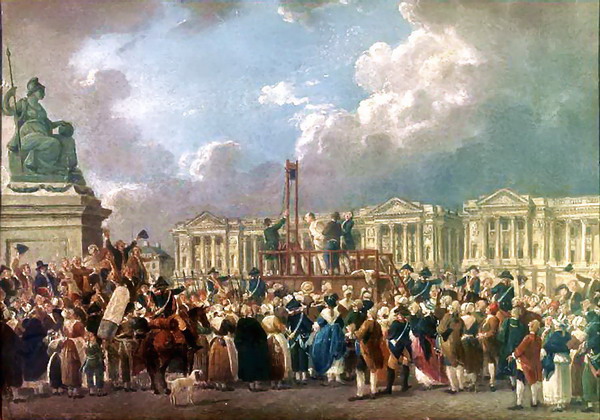Chronicle of a Death Foretold. The birthplace of the American automobile industry, the city of Detroit, has been declared bankrupt in the early hours of Thursday. Mounting debt, an increasingly dwindling population in the midst of serious industrial crisis being experienced, were the ingredients that have forged the largest municipal bankruptcy in US history.
Kevin Orr, appointed by the state of Michigan as the external manager of the city, was commissioned to seek bankruptcy protection under Chapter 9 of the bankruptcy law of the United States. Justice now must decide whether to accept the request for suspension of payments and debt restructuring amounting to 18,500 million dollars, although several banks since June Orr had agreed with a rebate of up to 75%.
What is happening in Detroit?
Capital of the World Motor 50
Michigan State’s largest city was in the middle of last century, the clearest example of the American Dream. Large buildings crowned its streets and major companies in the automotive sector, booming at that time, they decided to set up their headquarters.
Born in 1904 Ford Motor Company, founded by Henry Ford. In addition to Ford, other automotive pioneers such as Walter Chrysler and Dodge brothers decided to set up their factories, creating thousands of jobs so the population grew exponentially. In the 50s of the last century one can speak of a true demographic explosion with a population that bordered the two million people. The city came to be called by many ‘the world motor capital’.
The life of the people began to change. A private car and home ownership were no longer just a dream for people in Detroit. But little it lasted the winning streak which was the fourth largest US city. The 1973 oil crisis caused an increase in US fuel but less than suffered by Europe and Japan.
Europe and Asia then started to increase production of vehicles that compete with the Americans. Since the Asian automakers entered the US market (about twenty years), at lower prices, Detroit giants (General Motors, Ford and Chrysler) began to suffer.
While industry in the city began to falter and jobs, heroin and crack were in full swing in the streets they were lost. Soon, crime, political corruption and unemployment settled in Detroit.
Between 1970 and 1980, Detroit was repeatedly called “The City of Fire”. In 1984 more than 800 fires broke into homes in the middle of the city so overwhelmed firefighters. These fires caused by arsonists and vandals degraded the image of the city and left hundreds of empty houses. These abandoned houses were used to sell drugs. The population was reduced to 700,000 inhabitants, 60% less than in the fifties of the last century.
Financial crisis
The 2007 financial crisis hit hard the already battered economy Detroit. The housing crisis was fattened in 2008 with the US. The end of the housing boom revealed an unthinkable reality for many economic analysts, and even more for norteamiericanos owners. In Detroit, it was possible to find real bargains: houses for $ 100.
The depreciation of property assets, coupled with the credit crunch facing the country since the outbreak of the subprime mortgages last summer, were the harsh reality that they faced thousands of families. The increase in foreclosures left a stamp of ghost town in some neighborhoods on the outskirts. Houses, libraries, abandoned schools. A bleak picture that far from being solved was the seed crop to that crime were increased and real ghettos were formed in this city in the state of Michigan. The bankruptcy of General Motors and Chrysler, infected by the pessimistic mood in the city consolidated in recent decades, did not help much.
The unemployment rate soared at that time to 21% in the city and the situation was becoming untenable. The crime came to decline in 2009 and not for lack of thieves but because there was nothing of value to steal.
Half a century of Democratic administrations
The last Republican mayor was Louis C. Miriani, who lost reelection in 1961. From then until now, coinciding with the decline of the city, there have been democratic governments that have based their policy on the creation of new taxes new political positions with high salaries with inefficient decisions in industrial matters.
Undoubtedly, all these rulers the height of corruption came to Detroit in 2002 and held office until 2008. Kilpatrick announced his resignation this year after pleading guilty to two felonies. Prosecutors said Kilpatrick operated a “private machinery to make money” from the mayor of Detroit. In 2010, he was sentenced to five years probation for obstruction of justice.
What is happening in Detroit: timeline of a ruined city
The escape
What happens when people flee a city? Input obvious. There are fewer people paying taxes. Tax revenues are reduced Hall and sooner or later have to adjust to that reality. If the trend continues, the hole can be very deep. In the 50s, Detroit had 1,800,000 inhabitants and was the fourth largest city. In 1970, a million and a half. In 1990, about one million. Currently, about 700,000.
Until 1990, most of this emigration were white, but the deterioration of services, lack of economic opportunities and continued insecurity caused among black middle-class professionals.
Engine seizing
Detroit is one of the most cited of the consequences of the crisis of traditional US industry examples. For decades, it was the great symbol of American automotive industry. Given the role of the car in culture and sociology of the country, that position seemed unquestionable. But those big cars voracious consumers of fuel began to have it tough when the middle class discovered the virtues of vehicles made in Japan, while the rich betting on a good European car. General Motors and Chrysler were plunged into crisis, but in recent years have been soaring after a hard restructuring.
Not enough to save the economy of the city, but at least it’s a start. Detroit has lost not only citizens but also jobs. Its unemployment rate is 16%, double the national average.
As Roger explains Senserrich, US municipalities assume many competencies for example in Spain are the responsibility of the central government or autonomy, such as education, public order and the pensions of local officials. All this implies a high level of expenditure becomes unaffordable debt when tax revenues swoop. “Cities in the United States collected using property taxes, spending on education. When a city loses population, low housing prices. If you also are emerging middle classes, the decline is even more pronounced,” writes Senserrich .
Surgery
In March, the Governor of Michigan, Republican Rick Snyder, decided to appoint a bankruptcy expert to take charge of the finances of the city is made. A kind of troika formed by a single controller with absolute powers. The City appealed the appointment in court and lost. The choice was Kevyn Orr, who is black, a detail that is never less in a city whose mayor, Democrat Dave Bing is also black, as is 82% of its inhabitants. But Orr is also an expert in restructuring companies in financial difficulties and had an important role in resolving the crisis in 2009 Chrysler lawyer.
The bankruptcy was not inevitable. Kevyn Orr proceeded with cuts and initiated negotiations with unions and bondholders. When there was no agreement, he asked a federal judge proper authorization. Mayor regrets the decision, but not lead the protest. In fact, he expects the team to be successful and Orr that the city can rise again.
Who are the victims?
Unions fear that the pension funds of local officials are the main victims. The debt relief will also affect entities that have purchased bonds issued by the city, but many of them are guaranteed by what is legally not possible to assume losses. Orr included plans to pay 75 cents for every dollar invested in the debt of the city by two major banks, UBS and Bank of America, while municipal workers would receive much larger cuts in their health insurance and pensions. Therefore, unions suspect Orr bankruptcy intended to achieve what no negotiation would have given. Other cities in poor financial situation will examine this precedent.
Valuable art
A decision by the auditor that caused the alarm Orr in Detroit before the bankruptcy was to order an inventory of the funds of the largest museum in the city (Detroit Institute of Arts). It has one of the finest art collections in the US with works by Van Gogh, Degas, Matisse, Bruegel the Elder. In 2004 these funds were valued at 1,000 million dollars.
¿Orr dare to sell all those assets to reduce debt? The state attorney general said that would not be legally possible.
Bad place to call the police
The quality of municipal services has sunk because of their financial problems. The people of Detroit have to wait 58 minutes before the arrival of police after a call for an emergency. The national average is 11 minutes.
In a context of declining national crime in all major cities, Detroit is the exception. It currently has the highest homicide rate among major cities. In 2011 there were 344 murders, less in any case than in the previous decade. Only the author was arrested on 39 of them. That year the city lost 200 police officers for budget cuts.
According to a ranking by Forbes, Detroit is the most violent city between large municipalities in the country for the fourth consecutive year. In the most violent crimes, more than five times the national average.
2012 was even worse than the previous year: 411 homicides.
Falling to pieces
The state of housing in large parts of the city is terrible. It has 78,000 abandoned buildings, of which 38,000 are in danger of ruin.
An estimated 40% of city streetlights were not working in the first quarter of this year.
Firefighters have orders not to use the stairs of their trucks unless absolutely necessary to save lives. No inspection has made them security for years.
Photo by Jeffrey Smith, CC.

